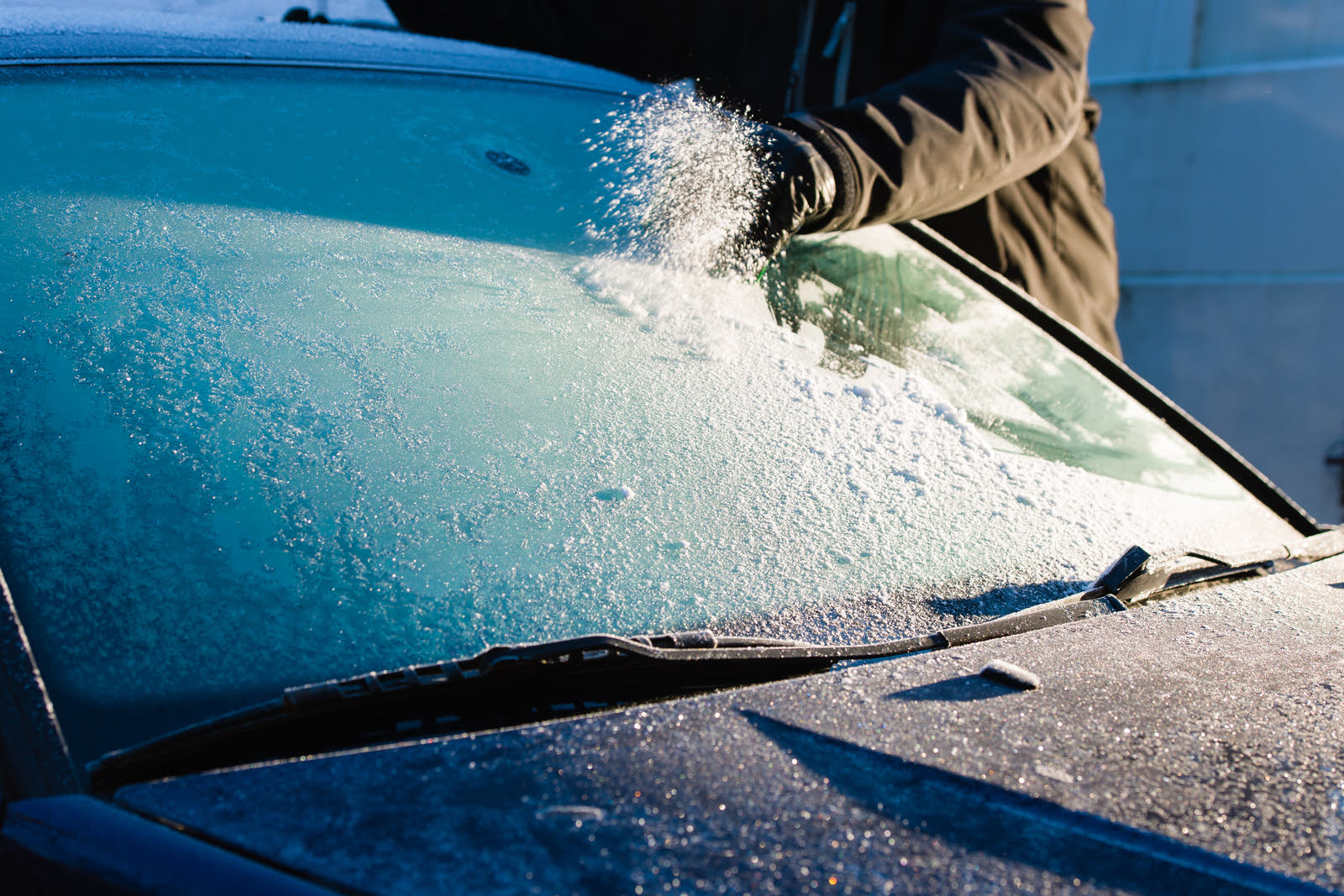Updated on: July 25, 2021
Anyone who's dealt with their car's windshield fogging up knows it can be both frustrating and dangerous. Window fog is due to condensation, so understanding the cause of that condensation will go a long way toward quickly eliminating the fog on your car windows.
How to Defog Your Windows When It’s Cold

Warm air holds more water vapor than cold air, and the warm air inside your car absorbs moisture from your breath, wet shoes, and damp clothing. In cold weather, the outside air cools the glass windows, creating the perfect conditions for the moist air inside of the car to condense and fog your windows.
Although it may seem like the fastest way to deal with the issue, don't wipe away the condensation on your car windows with a cloth or your hand. Without adjusting the environment that is causing the fog, you'll see more condensation return.
In winter, the key to defogging a window—and keeping it defogged—is warm, dry air. Turn on your car's heater to get things warmed up, and turn on your air-conditioning system to keep the air you're introducing nice and dry. That's right: Even on a cold day, you should use your air conditioner to keep your windows clear. Air conditioning (AC) doesn't just cool your car; it's an invaluable tool to rapidly de-fog your windows in the winter, helping you drive safely.
Getting into a cold car and immediately turning the blower fan on full blast may not be the best—or quickest—option for dealing with a fogged window. Use your fan's medium speed to allow the air more time to warm and dry before it's directed at the foggy windshield. Make sure you have set your vents to the defrost setting, too, as this will preferentially direct air at the windshield.
If your car doesn't have AC, make sure you are allowing air from the outside into your car. Set your interior vents to fresh air instead of recirculate. Cracking a window is also helpful in allowing the wet air to escape as it is replaced by dry air.
How to Defog Your Windows When It’s Hot

While less problematic for auto glass than cold winters, summer's hot air and humidity may also fog up your windows. Unlike in the winter, summer fogging will occur on the outside of the glass, where the season's warm, moist air condenses on AC-chilled windows. You can use your windshield wipers to clear fog on the outside of the windshield as an immediate, temporary measure to restore visibility. However, the key to preventing the fog is to allow the windows to remain warm. Redirect your car's vents away from the glass, don't use the defrost setting, and consider turning up the interior temperature slightly.
Know the Difference: Defogging vs Defrosting

Frost is moisture frozen on your car's window glass. It can either be from frozen fog and mist on the inside of your windows, or it can be ice and snow on the outside. To clear your windows from frost, you will either have to manually scrape the frost off or melt it and then dry the water.
Many cars have an electrically heated rear window which will warm the glass, melting ice and drying off the fog. Once the glass is warm, it is much less likely to fog up again. If the outside of your windshield is covered with snow and ice, you can speed up the process by clearing the windshield with a snow brush and scraper. This will make it easier for the system to melt and clear what remains.
Be patient. Start your car five to ten minutes before you need to drive, so it has time to melt the frost. Once the engine is warmed up, warm air will melt the ice and dry the residual fog and moisture, restoring visibility with little effort on your part.
Pro Tip: Keep Your Windshield Clean

You can take a few steps to reduce fogging and make it easier to defog a window if it appears. First, keep your windows clean—especially the inside of the glass. Even a slight haze from dirt can affect visibility in certain conditions. When you combine that dirt with fog, things can get dangerous.
Plus, a dirty window is more likely to fog up than a clean window. The tiny dirt particles are ideal areas for water to begin to condense, causing fog to occur more quickly and more often than it would on a very clean window. Regularly using window cleaner can help prevent fog from forming in the first place.
There are also specialized automotive anti-fog treatments, like Rain-X, that you can use on your windows. In combination with a clean window, these materials work well to stop fogging by reducing your windows' surface tension and dispersing the fog's micro water droplets into a thin water film that is much more transparent. Most products come in a liquid form, which you apply to a clean, dry window and polish to an invisible film.
The Bottom Line
Foggy windows don't have to be a problem or a hazard. If you understand the weather conditions causing the fog and know how to properly adjust your car's ventilation controls, you can eliminate and prevent a fogged window quickly and easily. Take the time to understand your car's different fan speeds and heat settings, and figure out where to set and direct your vents to get the best and quickest de-fogging performance from your car. Keep your windows clean and, in extreme climates, consider an anti-fog treatment to reduce fogging before it starts.
Easy DIY Car Maintenance Jobs Anyone Can Manage
How To Check Your Tire Pressure
The Car Maintenance Schedule You Should Follow
